#pitt rivers museum
Explore tagged Tumblr posts
Text

Girl from Veľký Lom. Slovakia. Photography by Karel Plicka. 1928.
Image from the collection of Nevill Forbes. Pitt Rivers Museum.
#Slovakia#eastern europe#early 20th century#national dress#pitt rivers museum#nevill forbes#karel plicka#velky lom#second one of these for which i have a reliable attribution#i'm so happy
115 notes
·
View notes
Text

Lyra's arctic coat at the Pitt Rivers Museum, Oxford.
#his dark materials#philip pullman#lyra#lyra silvertongue#lyra belacqua#svalbard#Arctic#Oxford#Pitt Rivers Museum#museum of natural history
12 notes
·
View notes
Text
It's my birthday, so I've spent the day so far touring the Pitt Rivers Museum in Oxford. I'll share some photos:

Gorgeous Norwegian powder horn.

Moccasins!

Bosnian peasant house; I want to live here.

Beautiful Pacific Northwest stone carving.

Navajo jewellery, beautiful as always.

My personal favourite, a Romanian icon of the Nativity painted on the inside of an eggshell.
3 notes
·
View notes
Text
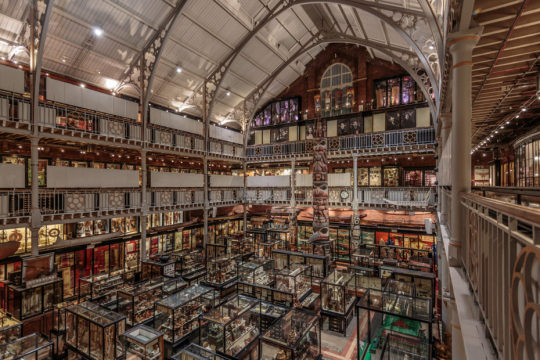





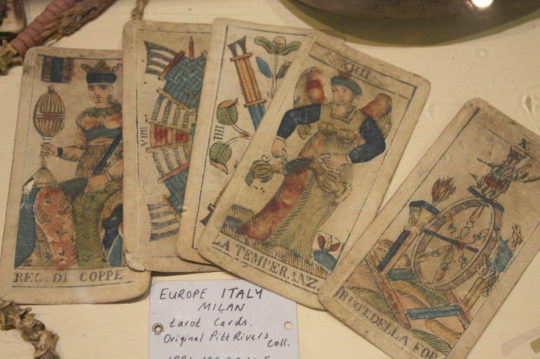
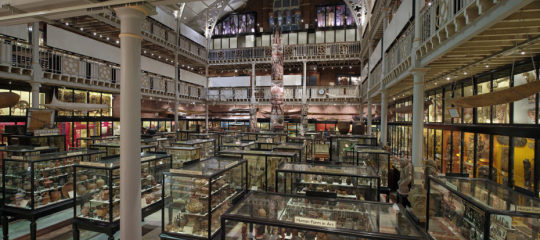
Pitt Rivers Museum
The Pitt Rivers Museum, at the University of Oxford, is unusual among modern museums in that it has largely been kept in the 'Cabinet of Curiosities' style it was originally set up in. The founder, Augustus Pitt Rivers, was a prolific collector and preferred to display things sorted by type, rather than by place - think weapons, or mirrors, or items made from leather, near others of similar use but from different eras or locations.
The museum can also be toured virtually, here.
4 notes
·
View notes
Video
Dodo - Pitt Rivers Museum, Oxford da neilsonabeel Tramite Flickr: Nikon Action Touch Kodak Portra 400
#bird#extinct#dodo#Nikon Action Touch#Nikon#Kodak#color#museum#Oxford#UK#England#Oxfordshire#film#analogue#point and shoot#Kodak Portra 400#Pitt Rivers Museum#flickr
5 notes
·
View notes
Text
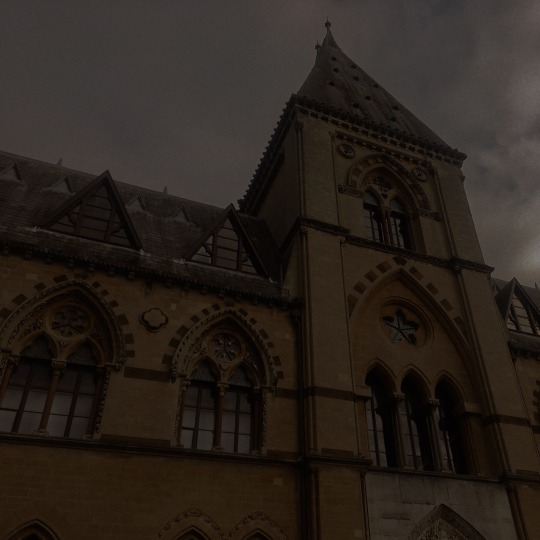

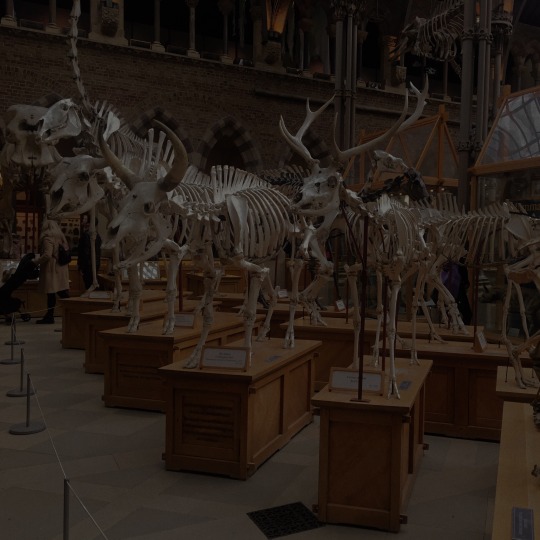


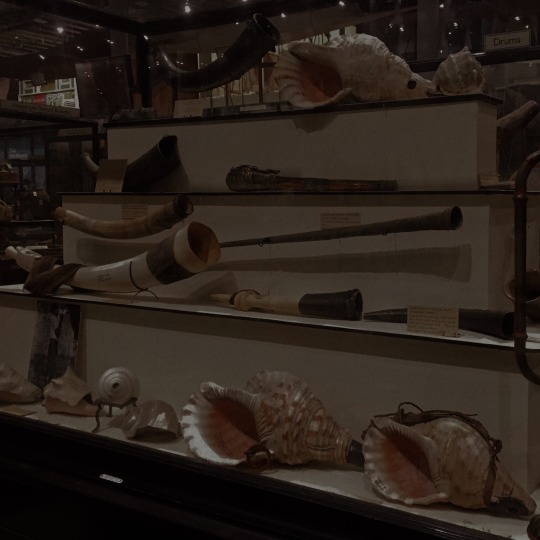

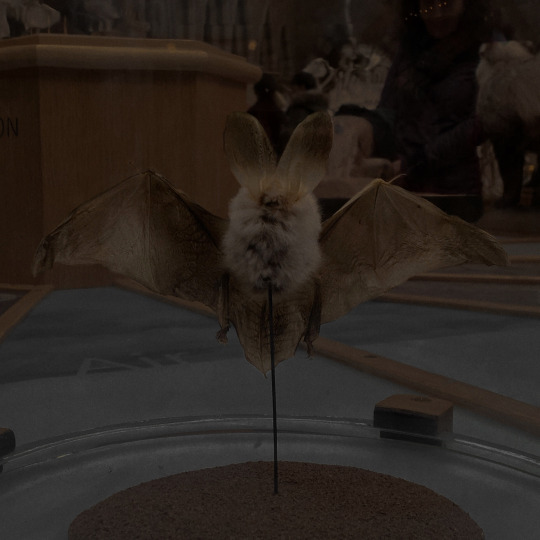

11/2/23 - pitt rivers & natural history museum
that little long-eared bat (8/9) filled me with joy today. holy fuck. what a creature.
#oxford university#oxford#pitt rivers museum#museums#natural history#dark academia#dark academia aesthetic#studyspo#study blog#studyblr#architecture
3 notes
·
View notes
Text
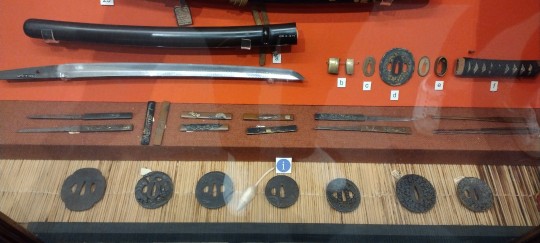
Samurai sword pieces and various tsuba.
Upper Gallery, Pitt Rivers Museum, Oxford
0 notes
Text
Til who the other two mechs where for this (everything id fpund before were only about TS and Tim)
Does anyone have a downloaded copy of the Pitt Rivers museum tour?
It seems to have disappeared from Vimeo. @gunpowderdtim and I are working on a publicly accessible archive of mechs material, but didn’t get to this before it went down. If anyone has a copy, please send it our way so we can preserve it!
If you don’t, reblogs would be helpful to hopefully reach someone who does have a copy.
#the mechanisms#the mechs#gunpowder tim#raphaella la cognizi#the toy soldier#drumbot brian#Youtube#pitt rivers museum
352 notes
·
View notes
Text
Raphaella playin w Brian's hair might actually be my favourite thing, they're so silly and affectionate w eachother
#im watching the tour of the pitt rivers museum because i really need to go there and dont have a full recording of hnoc live#....#i need to draw themm#my loves fr#they make me go silly#the mechanisms#text post
19 notes
·
View notes
Text

Peter Worsley 'after 2/3 weeks in the bush'. Via the Pitt-Rivers. Worsley's memoir "An Academic Skating on Thin Ice" documents his career as an anthropologist, communist, and key conceptualizer of the concept of 'third world'.
2 notes
·
View notes
Text

7 notes
·
View notes
Text

Lantern slide in the collection of Nevill Forbes. Unspecified Eastern Europe. c. 1900-1929. Pitt Rivers Museum.
57 notes
·
View notes
Text

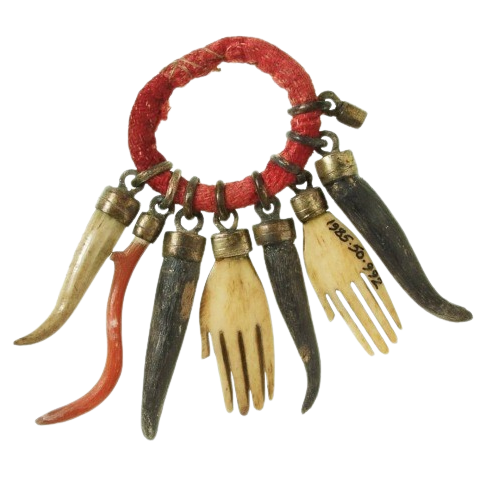


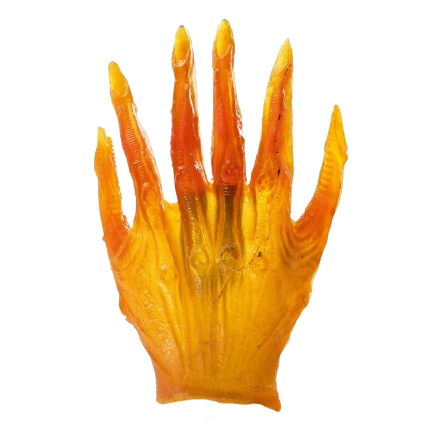
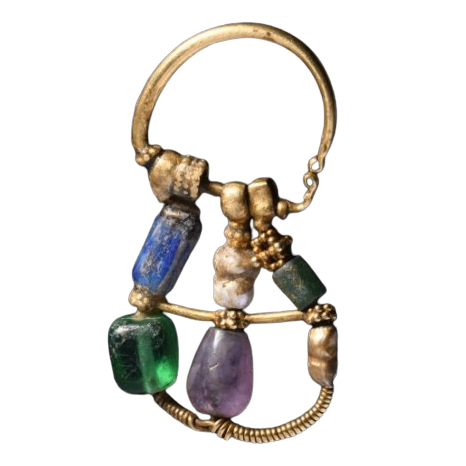



Random PNGs, part 193.
(1. Red Sun by Alexander Calder (1970), 2. Bone & coral charms from the Pitt Rivers Museum, 3. Botryoidal fluorite on amethyst, 4. Charm bracelet by Miriam Haskell, 5. Alien Hand by H. R. Giger (1979), 6. Greek gold earring with gemstones (5th-3rd c. BC), 7. Platanthera ciliaris, 8. Beaded necklace by Miriam Haskell, 9. ???)
#png#pngs#transparent#transparents#moodboard#artboard#imageboard#collage#collages#mixed media#sticker#stickers#jewellery#193
1K notes
·
View notes
Text








The Mechanisms at Pitt Rivers Museum
#the mechanisms#themechanismsedit#gunpowder tim#jonny d'ville#drumbot brian#marius von raum#raphaella la cognizi#toy soldier#musicedit#usermusic#late.gif#the sharpening is really inconsistent here bc i was experimenting with different ways to make it look less shit... none of them worked
548 notes
·
View notes
Text
Holed Stones in English Folk Magic
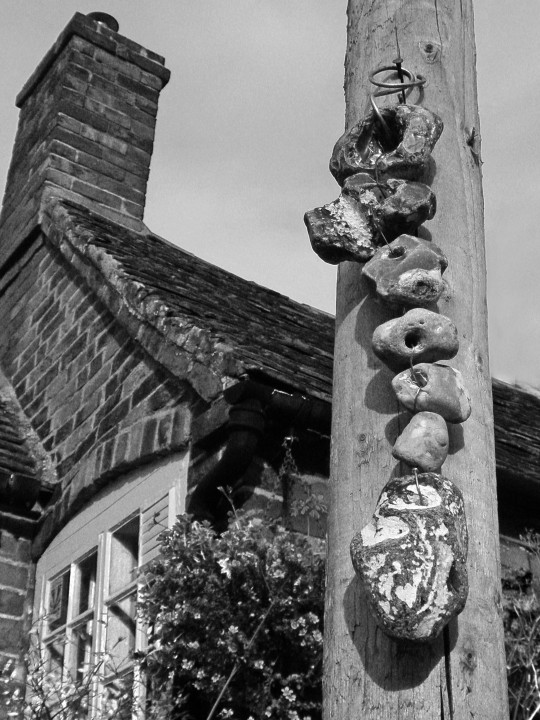
Sources at the end
Stones with naturally occurring holes in them have many uses in magic all over the world. In England they have been used for protection and luck as well as in medicine. Holed stones are known by many different names, In England they have been and are known by numerous names such as Hag stones, Witch stones, Serpents'/Snakes' eggs, Adder stones, and Lucky stones. For the sake of clarity, I will be referring to them as ‘holed stones’.
Luck and Protection
Holed stones are used as amulets for protection against Hags, witches, faeries, and other spirits, when they are used in this way they are referred to as hag or witch stones. People would hang a holed stone above the door of their home or barn, and sometimes passageways within the home. People would also keep a small holed stone in a pocket for luck and protection.
Holed stones have also been known for being lucky, being worn around the neck for luck or tossed over the shoulder after spitting through the stone's hole to grant a wish. It was also said that is a person tied a holed stone to their house keys, those who resided in the home would be prosperous.
In communities where fishing and/or sailing was common the use of holed stones for protection was common, tying them to the bows of boats or inside of smaller rowing boats for protection while at sea. Holed stones were also used to protect against drowning, Christopher Duffin (2011) writes, “The coxswain of the Ramsay lifeboat [during 1929], also a fisherman by trade, always wore a small discoidal [holed] stone around his neck, threaded with copper wire. The amulet, passed down through three generations of fishermen, was credited with preserving the life of the wearer through terrible maritime circumstances.”
Medicine
As these holed stones protected against hags, witches, faeries, and other spirits they would often be used in medicine, as magic was often thought to be the cause of illness.
One of the illnesses holed stones were used to treat is ‘hag-riding’, in the book A Dictionary of English Folklore it is defined as “a frightening sensation of being held immobile in bed, often by a heavy weight pressing on one���s stomach or chest […] In folklore, it was thought of as a magical attack, though whether by demonic incubus, ghost, harmful fairy, or witch varied according to place and period.” (Simpson & Roud, 2003) Today hag-riding is understood to be sleep paralysis. To treat hag-riding a holed stone would be hung above the bed of the sufferer or, if the sufferer is an animal, placed in a stable.
This belief applied to both humans as well as other animals; hag stones were often used in the treatment of ill livestock. In Lancashire holed stones would be tied to the back of cows to protect them from all forms of harm, “self-holed stones, termed ‘lucky-stones,’ are still suspended over the backs of cows in order that they may be protected from every diabolical influence.” (Harland and Wilkinson 1873).
Sources:
Thwaite, A.-S. (2020). Magic and the material culture of healing in early modern England [Apollo - University of Cambridge Repository]. https://doi.org/10.17863/CAM.63593
Vicky, King (2021, November 11). Hag Stones and Lucky Charms. https://www.horniman.ac.uk/story/hag-stones-and-lucky-charms/
Pitt Rivers Museum, Accession Number: 1985.51.987.1 https://www.prm.ox.ac.uk/collections-online#/item/prm-object-239947 (c) Pitt Rivers Museum, University of Oxford, Date Accessed: 21 January 2024
Adams, Thomas, fl. 1612-1653., 2013, A commentary or, exposition vpon the diuine second epistle generall, written by the blessed apostle St. Peter. By Thomas Adams, Oxford Text Archive, http://hdl.handle.net/20.500.12024/A00665
Jacqueline Simpson & Steve Roud (2003). A Dictionary of English Folklore. Oxford University Press. https://www.oxfordreference.com/display/10.1093/oi/authority.20110803095941856
Christopher J. Duffin (2011) Herbert Toms (1874–1940), Witch Stones, and Porosphaera Beads, Folklore, 122:1, 84-101, DOI: 10.1080/0015587X.2011.537134
Harland, J., & Wilkinson, T. T. (1873). Lancashire Legends: Traditions, Pagents, Sports, & C. With an Appendix Containing a Rare Tract on the Lancashire Witches, & C., &c. G. Routledge. https://archive.org/details/cu31924028040057
Photo source:
File:Hag Stones (8020251781).jpg. (2023, February 2). Wikimedia Commons. Retrieved 04:11, January 26, 2024 from https://commons.wikimedia.org/w/index.php?title=File:Hag_Stones_(8020251781).jpg&oldid=729610598.
#folk magic#witch#witchcraft#English folk magic#folklore#folk medicine#hagstone#hag stone#pagan#witchblr#green witch#magika#magic#witches#occult#folk witchcraft#folk witch#cunning folk#image description in alt#charms#traditional magic#traditional witch#traditional witchcraft#i hope this isn't absolute crap#mine#resources#my grimoire
152 notes
·
View notes
Photo

Archaeology
Archaeology is a wide subject and definitions can vary, but broadly, it is the study of the culture and history of past peoples and their societies by uncovering and studying their material remains, i.e. tools, ruins, and pottery. Archaeology and history are different subjects but have things in common and constantly work with each other. While historians study books, tablets, and other written information to learn about the past, archaeologists uncover, date, and trace the source of such items, and in their turn focus on learning through material culture.
As much of human history is prehistoric (before written records), archaeology plays an important role in understanding the past. Different environments and climates help or hinder the survival of materials, e.g. papyri can survive thousands of years in the hot and dry desert but would not survive in damp conditions. Waterlogged conditions, such as bogs, can preserve organic material, like wood, and underwater wrecks are also excavated using diving equipment. Working everywhere from digging in the ground to testing samples in laboratories, archaeology is a wide-ranging discipline and has many subsections of expertise. The two rapidly widening areas are experimental archaeology and ethnoarchaeology. Experimental archaeology tries to recreate ancient techniques, such as glass making or Egyptian beer brewing. Ethnoarchaeology is living among modern ethnic communities, with the purpose of understanding how they hunt, work, and live. Using this information, archaeologists hope to better understand ancient communities.
Archaeology of the Past
Archaeology as an academic study, career, and university subject is a fairly recent development. Nevertheless an interest in the past is not new. Humankind has always been interested in its history. Most cultures have a myth or story that explains their foundation and distant ancestors. Ancient rulers have sometimes collected ancient relics or rebuilt monuments and buildings. This can often be seen as political strategy - a leader wanting to be identified with a great figure or civilisation from the past. On the other hand, ancient leaders have also been known for their curiosity and learning. King Nabonidus of Babylon, for example, had a keen interest in the past and investigated many sites and buildings. In one temple, he found the foundation stone from 2200 years before. He housed his finds in a kind of museum at his capital of Babylon. The Roman and Greek historians wrote books about the past, and the stories of famous heroes and leaders have come down to us.
However, modern archaeology, or at least its theories and practice, stem from the antiquarian tradition. In the 17th and 18th centuries CE, wealthy gentleman scholars, or antiquarians as they are also known, began to collect classical artefacts. Fuelled by interest, they began to make some of the first studies of sites like Pompeii and drew ancient monuments in detail. The first scientific excavation has been attributed to Thomas Jefferson (third president of the United States of America) who dug up some of the burial mounds on his property in the state of Virginia, USA. The beginnings of modern field techniques were pioneered by General Augustus Lane-Fox Pitt Rivers, who excavated barrows at Camborne Chase with systematic recording and procedure. In the USA in the 1960s CE, archaeology went through a phase of new theories, often called processual archaeology. This approach has a scientific approach to questions and designs models to suggest answers and test its theories.
Continue reading...
31 notes
·
View notes